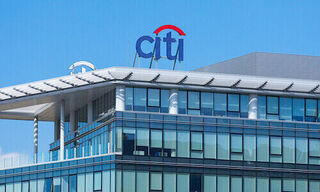Moody's Investors Service says that its outlook for the Philippine banking system is stable. Moody's previous positive outlook had been in place since 2012, and since then, most of its rated banks have been upgraded, along with the sovereign (Baa2 stable).
"We expect the credit profiles of the Philippine banks to remain stable over the next 12-18 months, supported by steady domestic economic growth, stable asset quality, and strong funding and liquidity profiles," says Simon Chen, a Moody's Vice President -- Senior Analyst.
"However, currently strong capital levels are likely to decline slightly as banks continue to grow their assets to tap demand from segments that had lacked access to credit, particularly the high-yielding consumer segment," adds Chen.
Chen was speaking on Moody's annual outlook update for the Philippines banking system, titled "Banking System Outlook: Philippines - Resilience of Domestic Economy Drives Stable Outlook."
Moody's expects the Philippine economy to maintain growth despite headwinds buffeting global emerging markets; real GDP growth will be 5.7% in 2015, and 6.0% in 2016. Re-accelerating government spending, ongoing infrastructure projects, robust private consumption, strong remittance inflows and an expanding business process outsourcing sector will cushion against China's (Aa3 stable) economic slowdown and weaker merchandise trade.
Although credit expansion is moderating after government-implemented cooling measures, it will remain brisk at 14%-16% over the next 12-18 months from 19% in 2014. However, increases in property prices remain in line with per capita GDP growth, and in Moody's view the Philippines can support a relatively fast pace of loan growth in under-penetrated sectors without experiencing excessive asset risks.
In addition, while credit costs will rise slightly as banks increase their lending to high-yielding segments, asset quality will remain stable, says Moody's. At the same time, increased lending to under-served segments will help widen net interest margins, as banks' total lending to the competitive corporate segment will decrease.
Philippine banks' funding and liquidity remain key credit strengths, notes the rating agency. Deposit growth has broadly kept pace with relatively fast loan growth owing to robust remittance inflows from overseas Filipinos and healthy corporate earnings, including business process outsourcing receipts. The system-wide loan-to-deposit ratio was 63% as of September 2015, a level that is low by global and regional standards. Given ample deposits, the banks' reliance on confidence-sensitive market funding is low.
Finally, Moody's expects government support for the banking system to flow through only in circumstances where there are contagion risks and only to the systemically important banks, considering the Philippine government has been proactive in implementing strict capital and liquidity requirements, and encouraging smaller banks to consolidate.




















